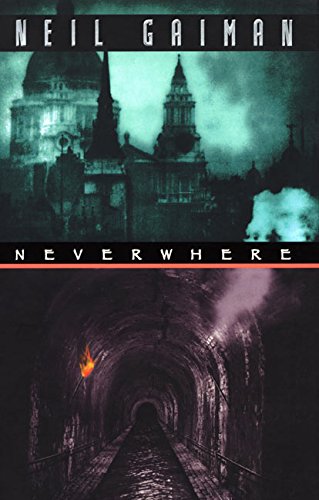Neverwhere
(This review originally appeared in Mythprint 35:6 (#195) in June 1998.)
Reviewed by Eleanor M. Farrell
As Neverwhere begins, Richard Mayhew, Londonite businessman, helps an injured young woman he finds lying on a sidewalk, only to find that this action has removed him from his normal life to that of London Below, a dangerous place indeed. Richard reluctantly joins the young woman, Lady Door, in a quest to find a reason for her family’s mysterious murders as well as a way for Richard to return home.
London Below exists beside Richard’s reality (London Above), with bizarre intersections located, fittingly, in Underground stations such as Black Friars (home of a Dominican order) and the British Museum (which was closed, in London Above, in the 1930s, but remains accessible to those living Below). A periodic Floating Market allows its citizens to barter goods and information; Richard reconnects with Door and her companion, the marquis de Carabas, auditioning bodyguards at one such market held after-hours in Harrods — a delightful idea as well as a marvellous description of a world full of wonders.
The creation of London Below and its denizens is the best part of Neverwhere. Anyone who has visited London develops a relationship with the Underground, and it seemed quite logical that this network be the entryway to an even more bizarre place than London itself. I was delighted to be able to picture Earl’s Court as a miniature kingdom inside a train, with an actual Earl and his entourage. The story has a real feel of menace, personified by Mr. Croup and Mr. Vandemar, assassins hired to do various nasty things to Door and her friends, but at the same time it’s not completely a nightmare world. Neverwhere has some of the flavor of the de Lint-esque faërie-overlapping-reality stories, only (in my opinion) it’s much better. Gaiman’s novel developed during his work on a BBC television series using this setting (and presumably also the characters). Nevertheless, the book works quite well as a novel, with a solid story line and well-drawn characters.


